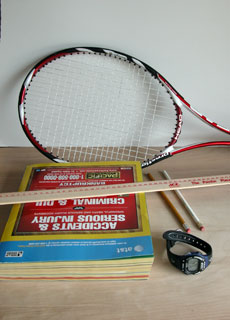
1. Materials
- Two Pencils
- Heavy book or weight
- Meter/yard stick or tape measure
- Stop watch
- Table edge
- Racquet
- Weight and balance (if don't know, see bottom of page)
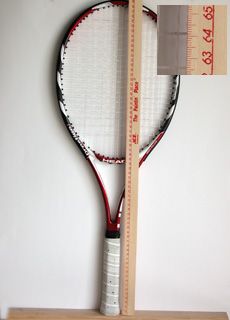
2. Measure To Top String
- Measure distance from end of the handle to the bottom of the top string (or whatever string you hang from).
- The finer the measurement the better (mm or 1/32").
- Swingweight measurement is very sensitive to small changes. Even 1 millimeter will affect the results.
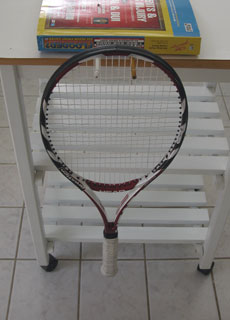
3. Setup: Hang Racquet
- Hang the pencils over the table edge and place the book on top for support.
- Hang the racquet by the top string on the pencils.
- Evenly space the pencils on either side of the center.
- Do not let the pencils rub on any main strings.
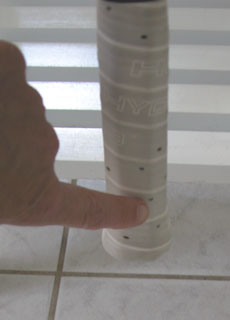
4. Tap or Push Handle
- Tap or push handle to set racquet in motion.
- A very small push will do.
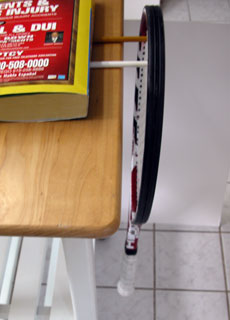
5. Swinging Racquet (1)
- Swing need only be 1-2 inches either side of center.
- Too large a swing will introduce error into the calculation.
- One swing equals one back-and-forth.
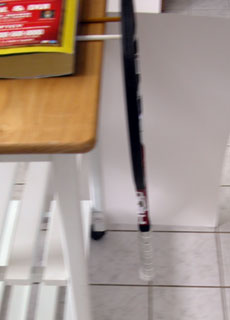
6. Swinging Racquet (2)
- Let racquet swing a couple of times to settle in.
- Find or place a mark on floor against which to count swings.
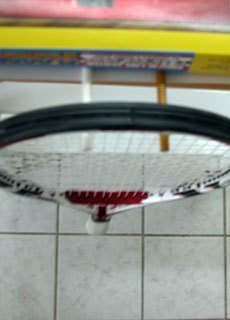
7. Count and Time Swings
- Stand over racquet to observe swings.
- Start stop watch just when swing reaches your mark (where it reverses direction) — count=0.
- Count for each time the racquet edge stops at your viewing mark.
- Adjust your viewing position slightly as swing decreases to keep view mark at apex of the swing.
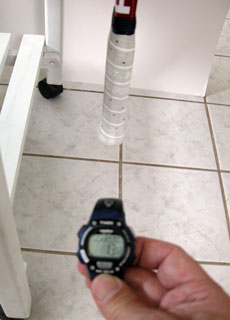
8. Stop Time
- Stop the watch exactly on the 10th swing.
- Time to one hundreth of a second.
- Write down the time.
- It is best to perform test 2-3 times and take the average.
- Be very precise: swingweight is very sensitive to the time.
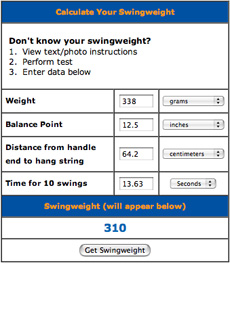
9. Enter Into Calculator
- Go back to the Customization calculator if you were in middle of customizing.
- Go to the Do-It-Yourself Swingweight calculator if you are simply measuring swingweight.
- Enter your measurements.
- Voila! There is your swingweight.
Quick and Easy Balance Measurement
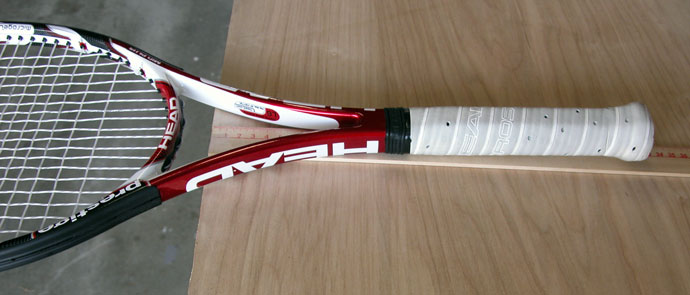
Procedure
- Tape a yard/meter stick to the top of a table.
- Place the "zero" end at the edge of the table.
- Move the racquet until the butt of the handle just comes off the table.
- Read the measurement at the handle butt.
- That is your balance point.
- NOTE: It is best to create a "T" along the edge of the table by placing something of equal height as the yardstick on either side of that yardstick. Otherwise you might not be able to balance the racquet accurately.

